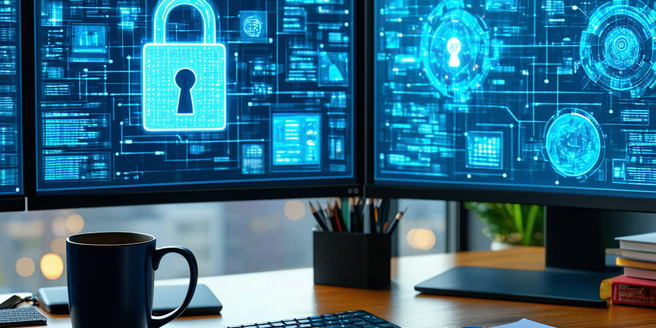Securing Collaboration Tools From Home

Understanding the Risks of Remote Collaboration
Remote collaboration has become essential in today’s interconnected world, allowing people to work together from virtually anywhere. However, this convenience brings various security risks that cannot be ignored. Unprotected networks, for example, can expose sensitive data to cyber threats, making it imperative to use secure connections. Members of remote teams might use personal devices for work purposes, which often leads to bypassing corporate security measures. This can create vulnerabilities that hackers could exploit to gain unauthorized access to critical information. Moreover, the collaboration tools themselves, which facilitate communication and coordination, can be vulnerable to attacks if they lack proper security protocols. These tools can become entry points for cybercriminals if not adequately protected. Understanding these risks is crucial in developing effective security strategies to protect against data breaches and unauthorized access while collaborating remotely. Organizations must invest in secure technologies and enforce strict security policies to ensure that remote work is both efficient and safe. Additionally, training employees on best practices for maintaining security while working remotely can further minimize risks and enhance the overall security posture of the organization.
Implementing Strong Authentication Measures
To secure collaboration tools effectively, the implementation of strong authentication measures is absolutely vital. Multi-factor authentication (MFA) is a critical component in this approach, as it requires users to provide two or more verification factors, thus adding layers of security. Alongside MFA, utilizing complex passwords is essential, as they make unauthorized access much more challenging. In addition to these methods, the use of biometrics, such as fingerprint or facial recognition, and hardware tokens, like USB devices that generate one-time codes, can provide additional and robust safeguards against unauthorized access.
Moreover, it is crucial to encourage regular password updates to ensure that any potential threats are mitigated in a timely manner. Educating users about the importance of not reusing passwords across different platforms is also key to preventing credential theft, which can lead to unauthorized entry into systems. By instilling a culture of vigilance, businesses can ensure that only authorized individuals have the ability to access sensitive information. These combined measures create a comprehensive strategy to enhance the security of collaboration tools, protecting crucial data from potential cyber threats.
Data Encryption for Online Communication
Data encryption is critical for securing online communication. In today’s digital age, protecting information is paramount, and encryption serves as a vital tool. By encrypting data, organizations ensure that even if intercepted by unauthorized sources, the information remains unreadable and secure. Utilizing end-to-end encryption in collaboration tools is important for protecting data during transmission, keeping it inaccessible to cyber threats. Encrypting stored data secures information from unauthorized access even when not actively used. Implementing robust encryption protocols is essential for data security, involving up-to-date standards that protect against emerging threats. Regularly updating these protocols helps maintain the confidentiality and integrity of communications, especially in a remote working environment. In addition to securing communication channels and stored data, encryption builds trust between organizations and their clients. By demonstrating a commitment to data security, organizations can reassure clients that their information is handled securely. This can enhance the organization’s reputation and foster stronger customer relationships. Overall, encryption is an indispensable element of any comprehensive security strategy, protecting data and ensuring confidential communication. As cyber threats evolve, organizations must remain vigilant, regularly assessing and updating their encryption techniques to stay ahead of potential vulnerabilities in our interconnected world.
Best Practices for Secure File Sharing
Secure file sharing is essential in protecting sensitive information from unauthorized access. In today’s digital age, where data breaches and cyber threats are increasingly prevalent, safeguarding this data has become more crucial than ever. Implementing best practices, such as using secure file-sharing platforms with encryption and access controls, is a fundamental step in ensuring information remains confidential and protected. It is important to select a platform that offers robust security features, including end-to-end encryption, to prevent unauthorized interception. Moreover, limiting access to files on a need-to-know basis minimizes exposure, significantly reducing the potential for data leaks.
Using password-protected links and setting expiration dates for file access can further mitigate risks. These measures ensure that even if a link falls into the wrong hands, unauthorized individuals cannot access the files without the correct password or after expiration. This security layer safeguards against potential breaches. Training employees to recognize phishing attempts and avoid unsafe sharing methods is vital to maintaining the integrity of sensitive information. Regular training sessions and awareness programs equip employees to spot red flags and adopt safe practices, enhancing data security within the organization.
Monitoring and Managing Access Controls
Monitoring and managing access controls are paramount in maintaining security over collaboration tools. Regularly reviewing user permissions ensures that only authorized personnel have access to sensitive data. Implementing role-based access controls restricts users to the minimum required privileges, reducing potential abuse. To further enhance security, it is crucial to conduct regular audits of these access controls. It is also important to keep software updated to protect against new vulnerabilities. Additionally, integrating multi-factor authentication can provide an extra layer of security. Moreover, training employees on security best practices can fortify the overall security framework. Continuous monitoring of access logs helps identify unusual activities and respond to potential threats swiftly. Automated alerts can aid in timely threat detection and response, securing collaboration platforms effectively.